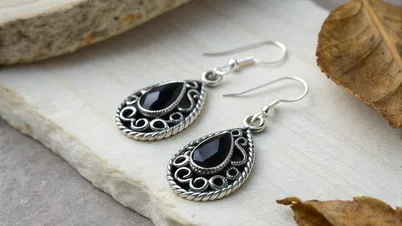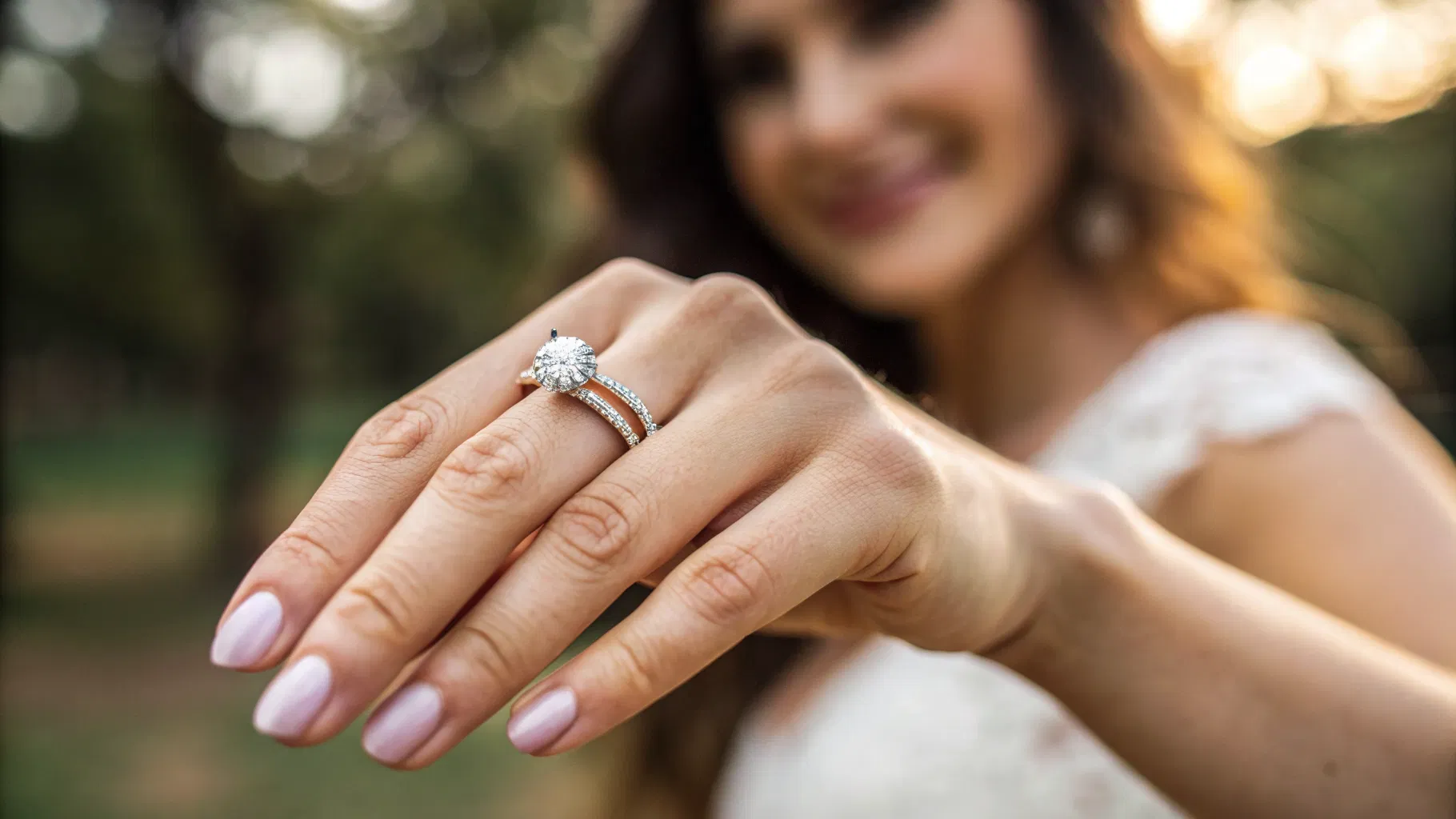
Why Do My Silver Earrings Turn Black in My Ear? Understanding Tarnishing and Solutions
Introduction
Have you ever noticed a darkened hue on your ears after wearing your favorite silver earrings? It can be a concerning and puzzling experience, leaving you to wonder about the underlying causes. According to recent studies, nearly 70% of people experience some form of skin discoloration related to metal jewelry. This blog post aims to explore the reasons behind the alarming question: why do my silver earrings turn black in my ear?
In recent years, there has been a growing desire for sustainable and personalized luxury, prompting many individuals to seek out jewelry that aligns with their ethical values. At DiamondsByUK, we are committed to redefining luxury by offering sustainable, conflict-free diamond jewelry that is accessible to all. As we delve into the topic of silver earrings turning black, we will also highlight how our dedication to craftsmanship and ethical practices sets us apart in the jewelry industry.
We will explore the chemistry behind silver tarnishing, the various factors contributing to it, and the steps you can take to minimize this issue. By the end of this post, you will be equipped with valuable insights that empower you to make informed choices about your jewelry, enhancing your overall experience with beautiful pieces like those found in our collections.
Understanding Silver and Its Properties
The Nature of Silver
Silver is a precious metal known for its lustrous beauty and versatility. It has been used in jewelry for thousands of years due to its malleability and ability to be polished to a high shine. However, silver is also a reactive metal, meaning it can undergo chemical changes when exposed to certain elements.
The Alloys in Silver Jewelry
Most silver jewelry, including earrings, is made from sterling silver, which is an alloy consisting of 92.5% silver and 7.5% other metals, often copper. This alloying process enhances the metal's strength but can also introduce elements that contribute to tarnishing. The presence of copper, for example, can accelerate oxidation, leading to discoloration.
The Tarnishing Process
Tarnishing is a natural process that occurs when silver reacts with sulfur-containing substances in the air. This reaction forms a layer of silver sulfide on the surface of the jewelry, which appears as a black or dark gray discoloration. When you wear silver earrings, the tarnish can transfer to your skin, causing your ears to turn black, especially if you have sensitive skin or wear your earrings for extended periods.
Factors Contributing to Silver Tarnishing
1. Environmental Factors
Silver is particularly vulnerable to tarnishing due to exposure to environmental elements. Common contributors include:
- Airborne Pollutants: Sulfur compounds in the air can react with silver, leading to tarnishing. Living in urban areas with high pollution levels can accelerate this process.
- Humidity: High humidity levels can promote oxidation, making tarnishing more likely.
2. Skin Chemistry
Your unique body chemistry plays a significant role in how quickly your silver jewelry tarnishes. Factors include:
- Sebum Production: The natural oils produced by your skin, known as sebum, can interact with silver, leading to discoloration. Individuals with more acidic skin may notice their earrings tarnish faster.
- Hormonal Changes: Fluctuations in hormones during puberty, pregnancy, or menopause can alter skin chemistry, impacting how jewelry reacts with your body.
3. Chemical Exposure
Household chemicals and beauty products can also contribute to tarnishing. Some common culprits include:
- Cleaning Agents: Chemicals in household cleaners can react with silver, causing discoloration.
- Cosmetics: Perfumes, lotions, and hairsprays may contain ingredients that accelerate tarnishing when they come into contact with your jewelry.
4. Poor Quality Metals
Not all silver jewelry is created equal. Jewelry made from lower-quality metals or alloys that contain higher amounts of reactive materials is more prone to tarnishing. At DiamondsByUK, we pride ourselves on offering high-quality, responsibly sourced materials that minimize these risks.
How to Prevent Your Earrings from Turning Black
Preventing your silver earrings from tarnishing requires a combination of proper care and mindful practices. Here are some practical tips to keep your earrings looking their best:
1. Keep Your Earrings Clean
Regularly cleaning your silver earrings is essential. Use a soft cloth to wipe them down after each wear, removing any oils or dirt that may contribute to tarnishing. You can also use a gentle jewelry cleaner specifically formulated for silver.
2. Apply a Barrier
To create a protective layer between your skin and the earrings, consider applying a thin layer of clear nail polish or a jewelry sealant. This can help prevent tarnish transfer and discoloration.
3. Store Properly
When not in use, store your silver earrings in a cool, dry place, preferably in an airtight container. This minimizes exposure to air and humidity, reducing the likelihood of tarnishing. Consider using anti-tarnish strips or pouches for added protection.
4. Choose Hypoallergenic Options
If you have sensitive skin or are prone to allergic reactions, consider wearing hypoallergenic earrings made from materials such as surgical stainless steel or titanium. These materials are less likely to react with your skin and cause discoloration.
5. Remove Before Activities
To minimize tarnishing, remove your earrings before engaging in activities that may expose them to moisture, chemicals, or sweat, such as exercising, swimming, or cleaning.
The Beauty of Lab-Grown Diamonds and Customization
At DiamondsByUK, we not only offer stunning silver earrings but also specialize in IGI-certified lab-grown diamonds. Our commitment to sustainability and ethical practices ensures that each piece is not only beautiful but also conflict-free.
Moreover, we understand that every individual has a unique story to tell through their jewelry. That's why we encourage you to Design Your Bespoke Jewellery with DiamondsByUK. Our customization process allows you to create a piece that reflects your personal style and values, often with delivery in just 1–2 weeks.
Conclusion
The darkening of your ears when wearing silver earrings can be attributed to various factors, including environmental elements, skin chemistry, chemical exposure, and the quality of the metals used. By understanding these causes and taking preventative measures, you can enjoy your silver jewelry without concern for tarnishing.
At DiamondsByUK, we believe in empowering our customers to make informed, ethical choices about their jewelry. Whether you're looking for exquisite silver earrings or lab-grown diamond pieces, our commitment to sustainability, integrity, and craftsmanship means you can wear your jewelry with pride.
Explore our stunning silver earrings collection today and discover how our ethical luxury can complement your unique style. If you’re ready to embark on a custom design journey, Contact Us to Create Your Unique Piece – almost any design is fully customizable, allowing you to express yourself beautifully.
FAQ
Why do my silver earrings turn black?
Silver tarnishes when it reacts with sulfur-containing substances in the air, forming a black layer of silver sulfide. This tarnish can transfer to your skin, leading to discoloration.
How can I prevent my ears from turning black when wearing silver earrings?
Regularly clean your earrings, apply a barrier like clear nail polish, store them properly, and consider hypoallergenic options to minimize tarnishing.
What should I do if my silver earrings tarnish?
Gently clean them with a soft cloth or a mild silver cleaning solution. For heavy tarnish, consider using a specialized silver polishing cloth.
Are lab-grown diamonds a good alternative to mined diamonds?
Absolutely! Lab-grown diamonds are ethically produced, conflict-free, and offer the same beauty and quality as mined diamonds at often lower prices.
How long does it take to create a custom piece of jewelry with DiamondsByUK?
Our custom design process typically has a turnaround of just 1–2 weeks, allowing you to receive your unique piece in a timely manner.
Explore our offerings and start your journey towards ethical luxury today!


